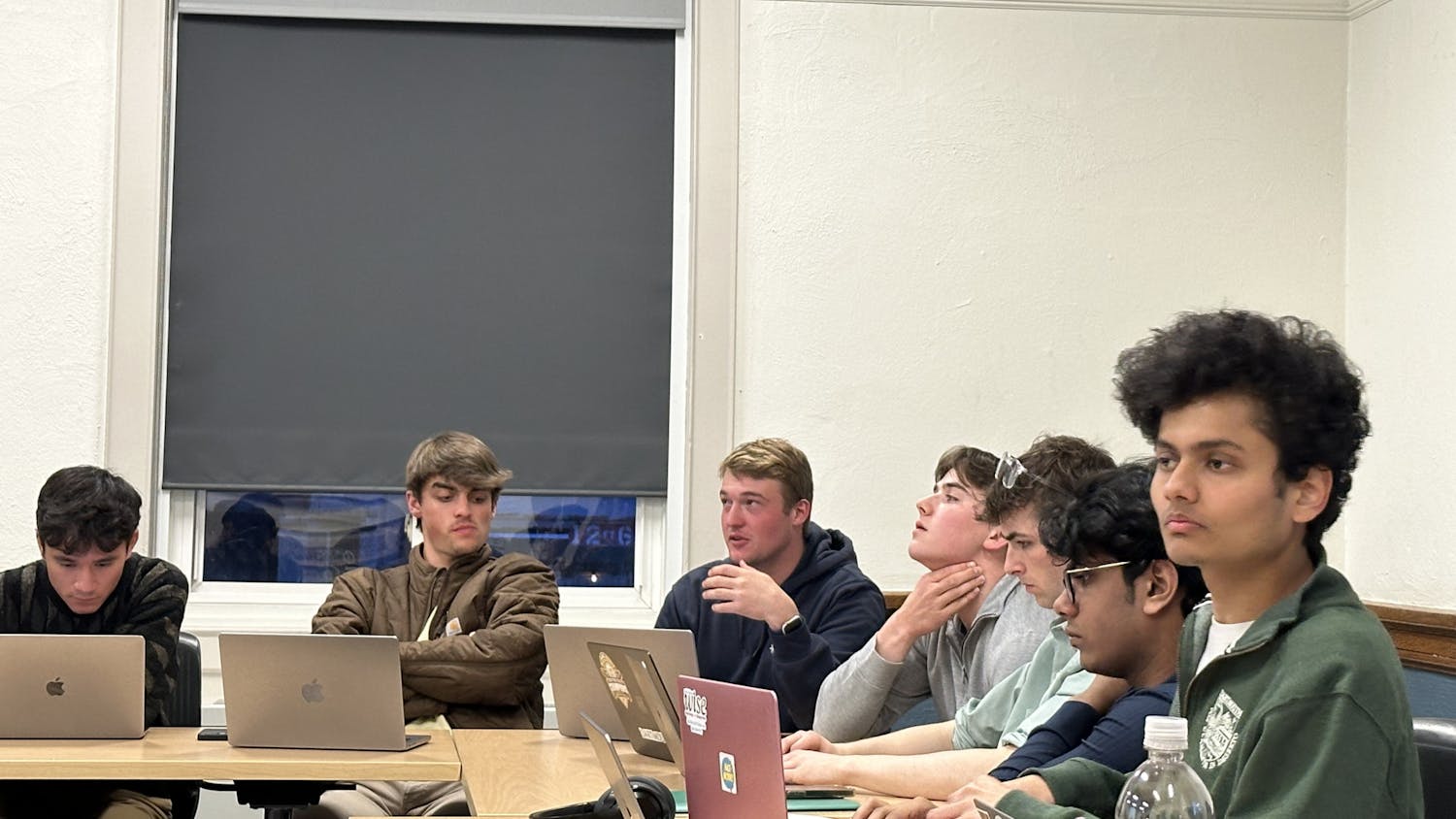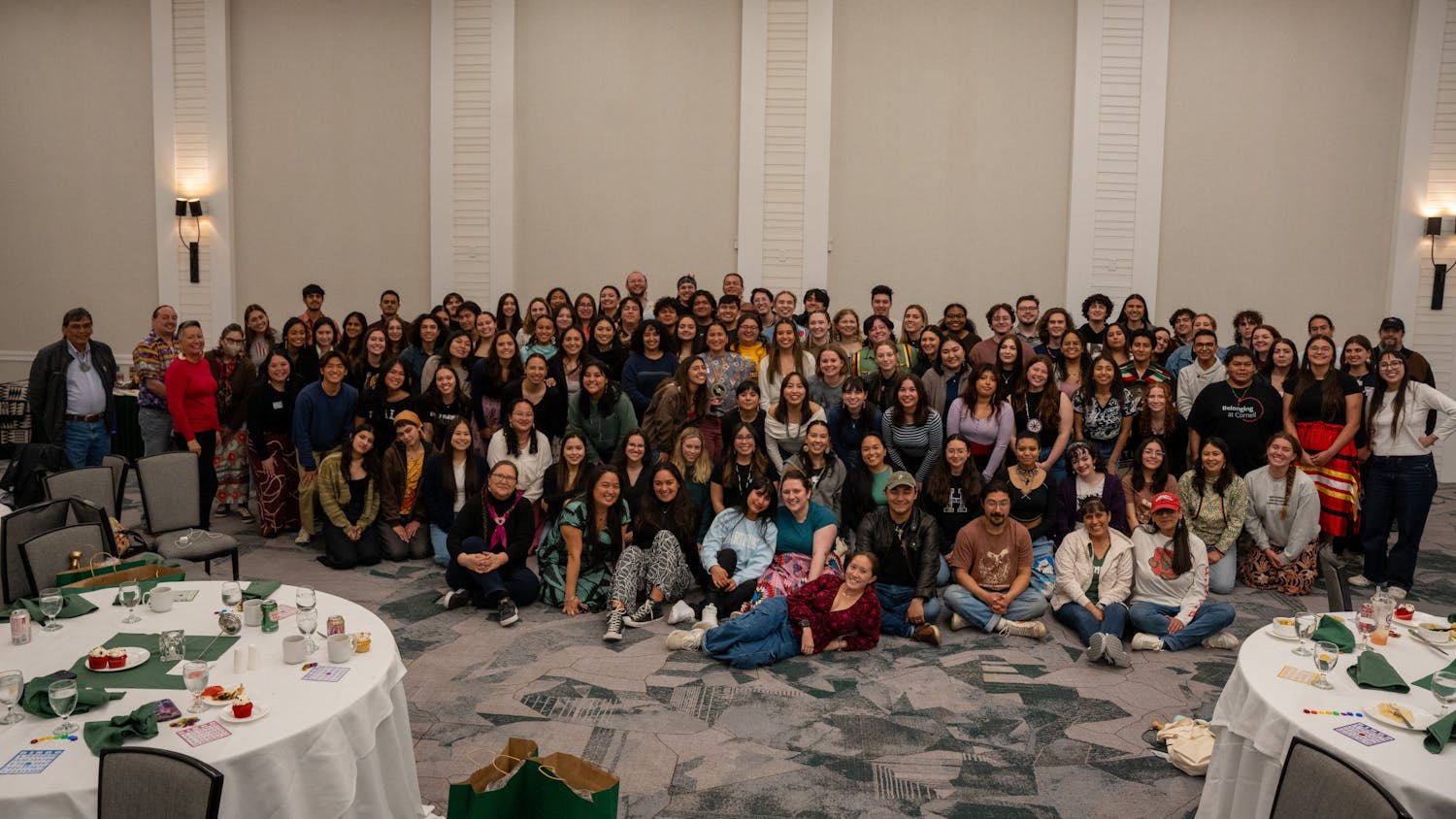So you’re a NARP — that is, a Non-Artistic Regular Person — but you want to get involved with artsy things. Whether it’s because you’re searching for a creative outlet for school-related stress, trying to become a more well-rounded individual or looking to post an artsy Instagram picture to woo your campus crush (a most noble cause), Dartmouth provides plenty of opportunity for you to accomplish your goal. Unfortunately, many of these great opportunities remain relatively unknown to the undergraduate student body. No fear: both NARPs and the already more artistically-inclined among us can find an outlet among the many creative options that do not necessarily require proficiency in an artistic skill offered by the Hopkins Center for the Arts.
If students are looking for an opportunity to create art they can take home with them while forming new connections in the design process, they can descend to the basement of the Hop, which houses the jewelry, woodworking and ceramics workshops. Those interested in working with clay no longer have to walk or drive to the ceramics studio, which was previously located across the Ledyard Bridge toward Norwich, Vermont, but recently moved to its new home in the Hop basement. Although some students who visit these workshops may frequently develop strong creative skill sets, these workshops are especially geared toward people who have little to no experience. Each workshop charges a termly fee of $12, with nominal additional costs for materials.
Jennifer Swanson, director of the ceramics workshop, recommends handbuilding — working without a pottery wheel — as a starting activity for beginners. Molding a handbuilt piece can take as little as one hour before glazing, and budding potters are free to leave an unfinished piece at the workshop to be finished at a later time. Those who feel ambitious are allowed to practice wheel throwing, a slightly more difficult technique, after taking two lessons.
To make the workshop more accessible to students of all levels, there is always at least one professional ceramics instructor and several student workers available to help anyone who is struggling, Swanson said. Besides the $12 termly fee, a four-pound block of clay can be purchased for $5.
According to Jeff Georgantes, the director of the jewelry workshop, the studio is a great place for all students to learn about jewelry making; workers excel in teaching beginners, and each project usually costs between $3 and $15 to make.
“It’s a place for students to creatively regenerate and exercise parts of their brains that don’t necessarily get [exercise],” Georgantes said. “Students [can] exercise their creative side without worrying about the constraints of grades.”
The woodworking workshop is also a great place for students to learn new skills and work with materials and machinery they may not be familiar with. Though safety concerns often deter students from woodwork, director Greg Elder reports that at least two professional instructors are always on hand to watch and guide students. Additionally, before students are able to use power tools, they are required to take a safety orientation class. The last class this term will be held on Tuesday, Feb. 7.
“We really do like having beginners here,” Elder said. “It’s a rare opportunity for people to learn woodworking. Most colleges don’t have woodshops where any students can go in and work, and once you leave here, it’s really hard to find a woodshop unless you make your own because of liability issues.”
Entry-level projects include crafting useful objects like bookshelves, small tables, bowls and cutting boards, but students and faculty have also made chests for drawers, chairs and even musical instruments, Elder said.
However, for the craft-averse among us, performance may be a more welcoming route than the workshops. Though the audition process for performing groups on campus can feel competitive and exclusive, there are two musical ensembles on Dartmouth’s campus that are noted for their dedication to providing a learning experience for students of all skill levels, especially beginners.
According to Hafiz Shabazz, the director of the World Music Percussion Ensemble, the ensemble welcomes students who have not played a percussion instrument before. Both Shabazz and intermediate students in the ensemble give instruction to new members, and even students who do not know how to read music are compatible with the group.
Shabazz changed the group’s name from “West African Drumming Ensemble” to the World Music Percussion Ensemble to “expand the consciousness of the ensemble,” opening it up to non-African people as well as people who were interested in playing world music not only from Africa. The group plays music from different continents, and Shabazz even encourages students to suggest music linked to their ethnic or national origin.
The ensemble uses instruments of all kinds, depending on the program. Many beginners start with conga drums, which originated in Cuba. Students also receive the chance to show off their new percussion skills in several performances throughout the year. This winter, the performance schedule features a “dance party” in Alumni Hall, a venue specifically chosen to facilitate and encourage audience participation.
The Dartmouth College Gospel Choir, directed by Walt Cunningham, is another group that is dedicated to helping beginners grow and develop their musical affinity. The group does not require auditions. According to Bryan Robinson ’16, administrative assistant of the gospel choir, administrators will guide even those students who have never sung in a group before and do not know their voice ranges.
Robinson added that the gospel choir is inclusive of students of all religions. Though Cunningham is Christian, he usually refers to a general “higher power” when speaking to students instead of a particular deity. Robinson said that students need only show a willingness to come to rehearsals and a dedication to learning about music.
For students who are interested in the arts but might not necessarily want to learn a craft or music performance skills, volunteer and professional opportunities that develop useful skills like communication and administration are also available through the Hopkins Center.
The Students Teaching in the Arts Program is an opportunity for students to work with children. START volunteers work with nearby elementary and middle schools by planning and executing arts integration activities. According to START volunteer program coordinator Mary Gaetz, volunteers do not have to be studying or proficient in an art — any student who simply likes a certain art form or is interested in working with children can apply to be a part of the program.
Currently, START volunteers are working in a fifth grade classroom, doing music, theater and visual arts projects centered around the scientific concept of matter. Dartmouth students recently used a children’s song to explain how parts are also components of a larger entity.
The START program is a great way to get off campus, meet kids and learn about communication in the real world, Gaetz said. Volunteers are not exclusively arts majors. In the past, they have included pre-med students, psychology majors and students interested in going into education, Gaetz noted.
Students can take these skills to the next level through the Hop’s senior internships program. Brandea Turner, senior events manager and internships coordinator, said that juniors and seniors interested in the arts can commit to an internship that lasts for the fall, winter and spring of one academic year.
Danielle Moragne ’17, who was previously a START volunteer, is now an intern for START. She said that her combined experiences gave her skills required for a variety of different kinds of jobs, as well as a better understanding of how administration works in the real world.
Turner specified that jobs and internships at the Hop are not only for students interested in a career in the arts. Still, for those who are interested in a slightly less intensive experience but still want to be involved with the arts, there are several jobs available, including that of a box office attendant, a student stage manager and an usher. None of these jobs require prior experience.
“If you’re good at talking to people or have customer service background and like interacting with people, that transforms into skills you need as an usher,” Turner said.
For the NARP, for students who are already artistic and for students who simply want to develop skills required in the professional world, the Hop is brimming with untapped potential for engaging students in the arts — it’s simply a matter of taking advantage of its numerous programs and facilities, learning to perform with one of its student ensembles or work at the Center.
Correction appended (Jan. 26, 2017):
A previous version of this article stated that the ceramics studio was located across the Ledyard Bridge, when in fact it recently moved to the basement of the Hop.



